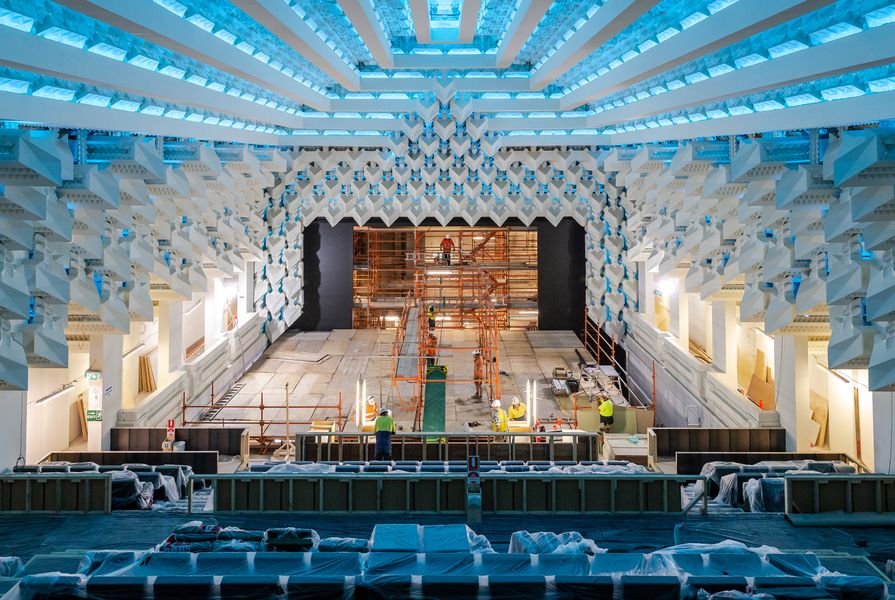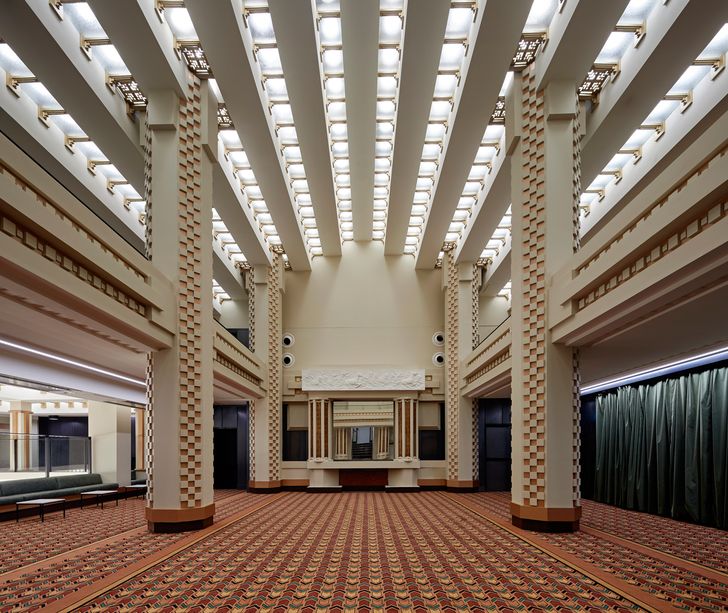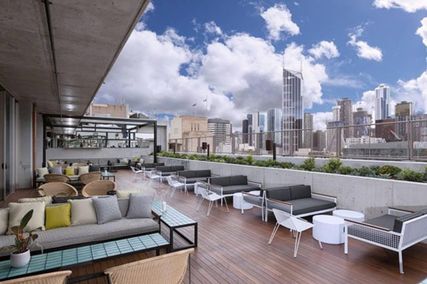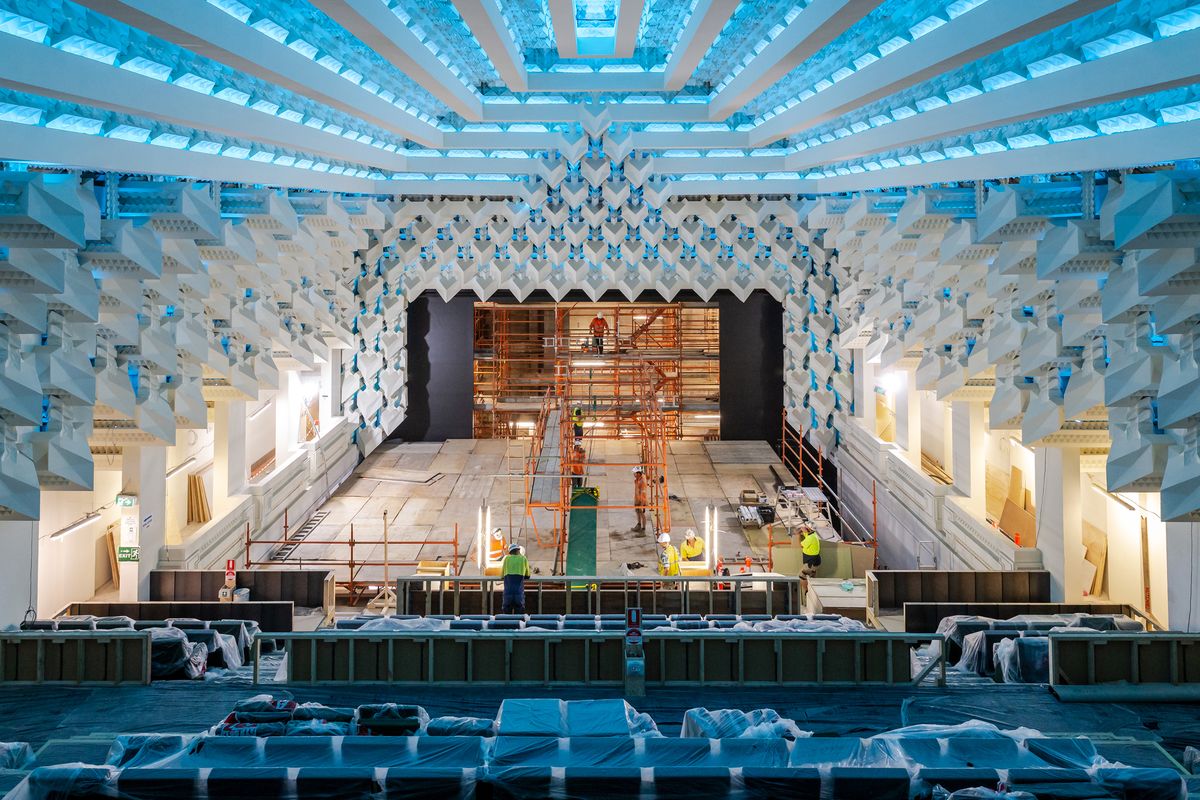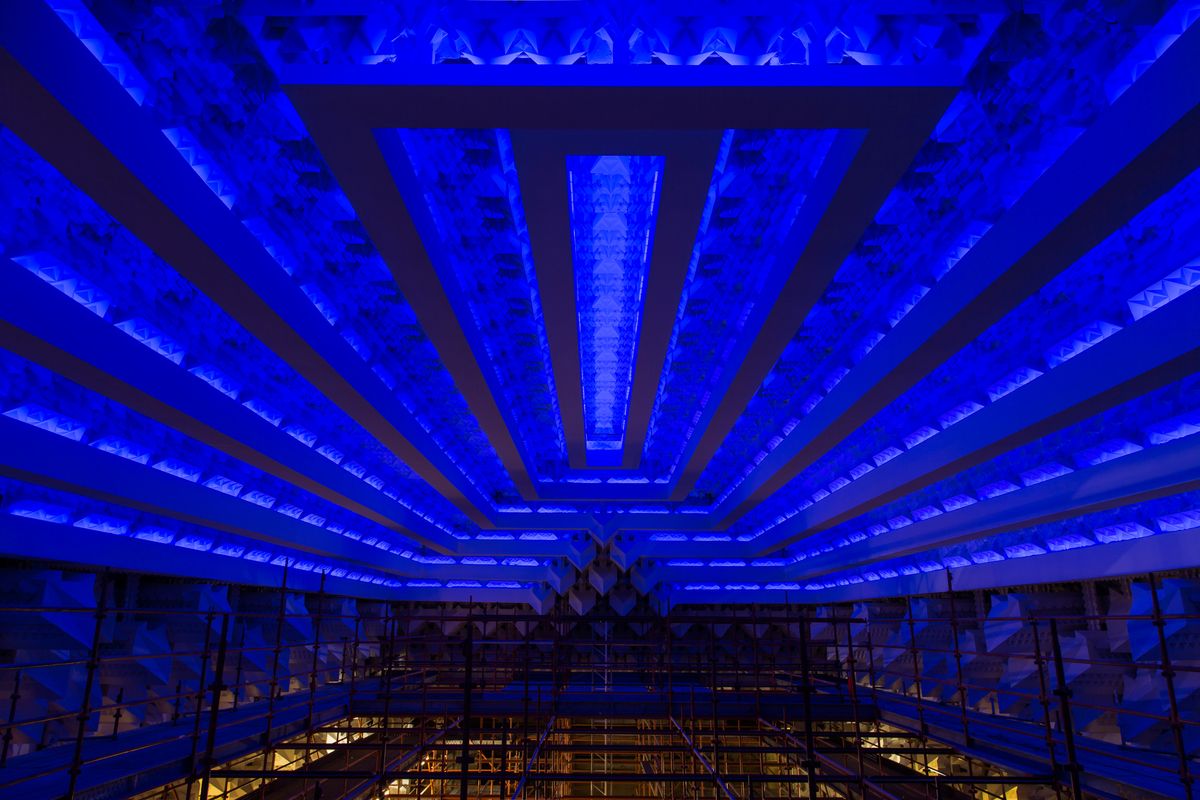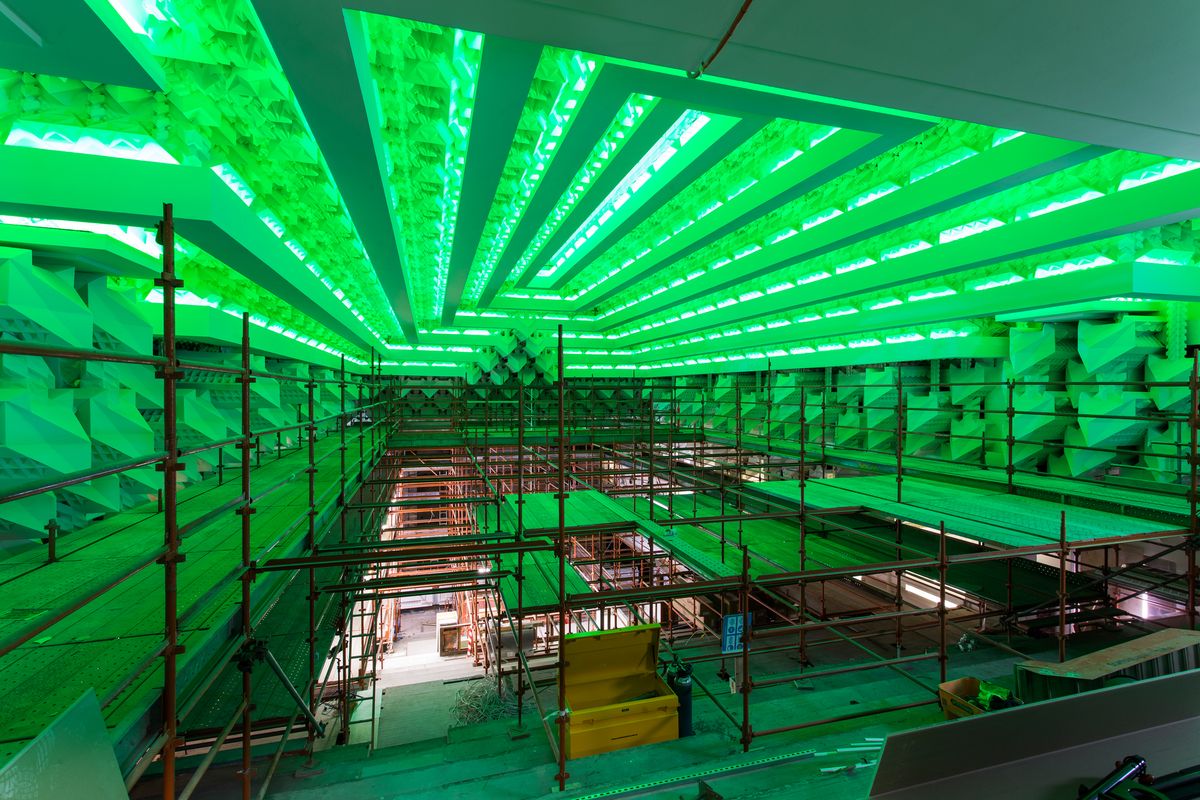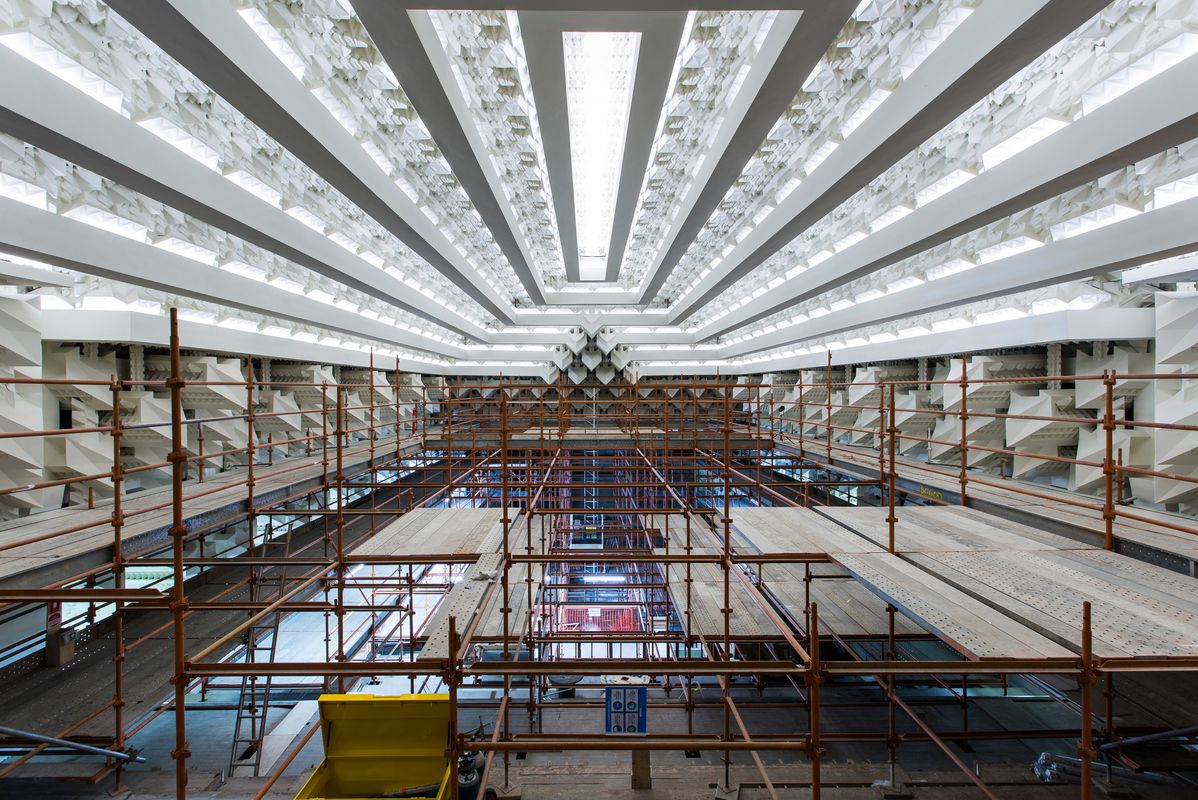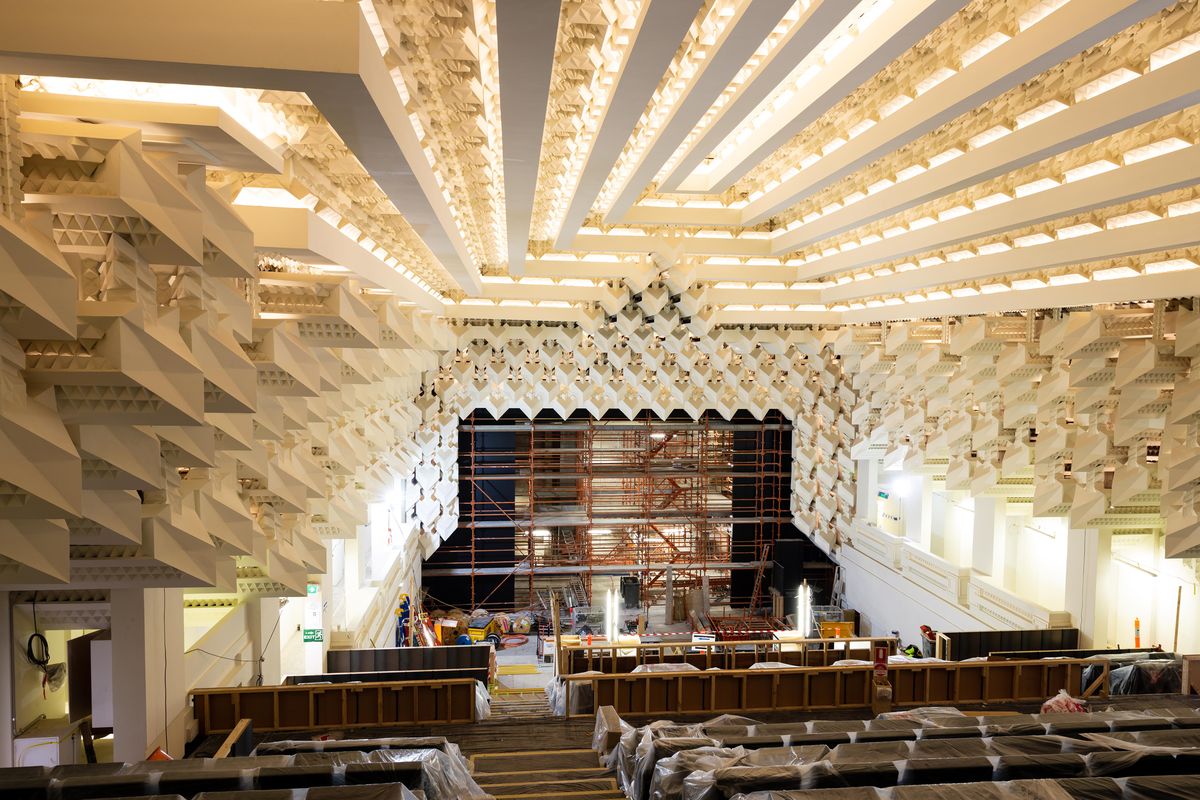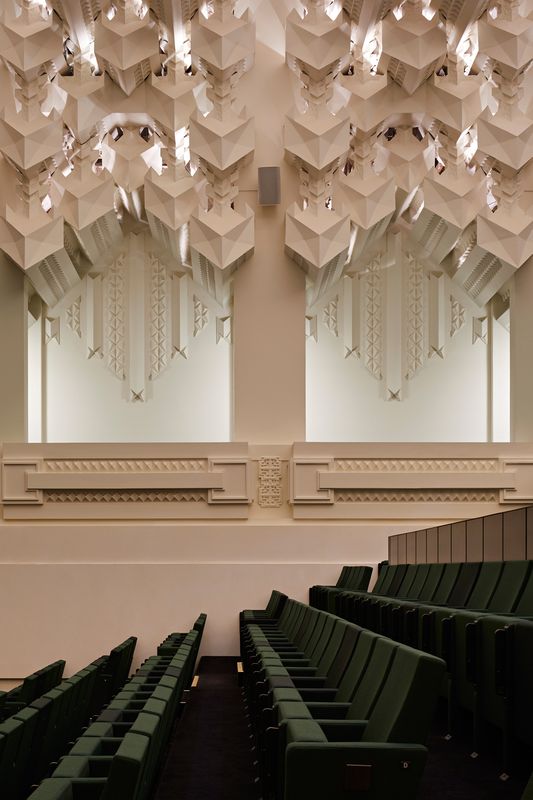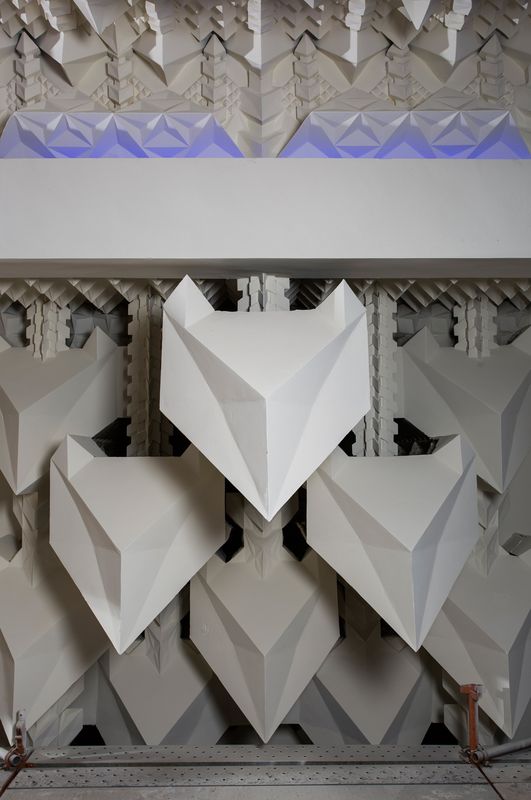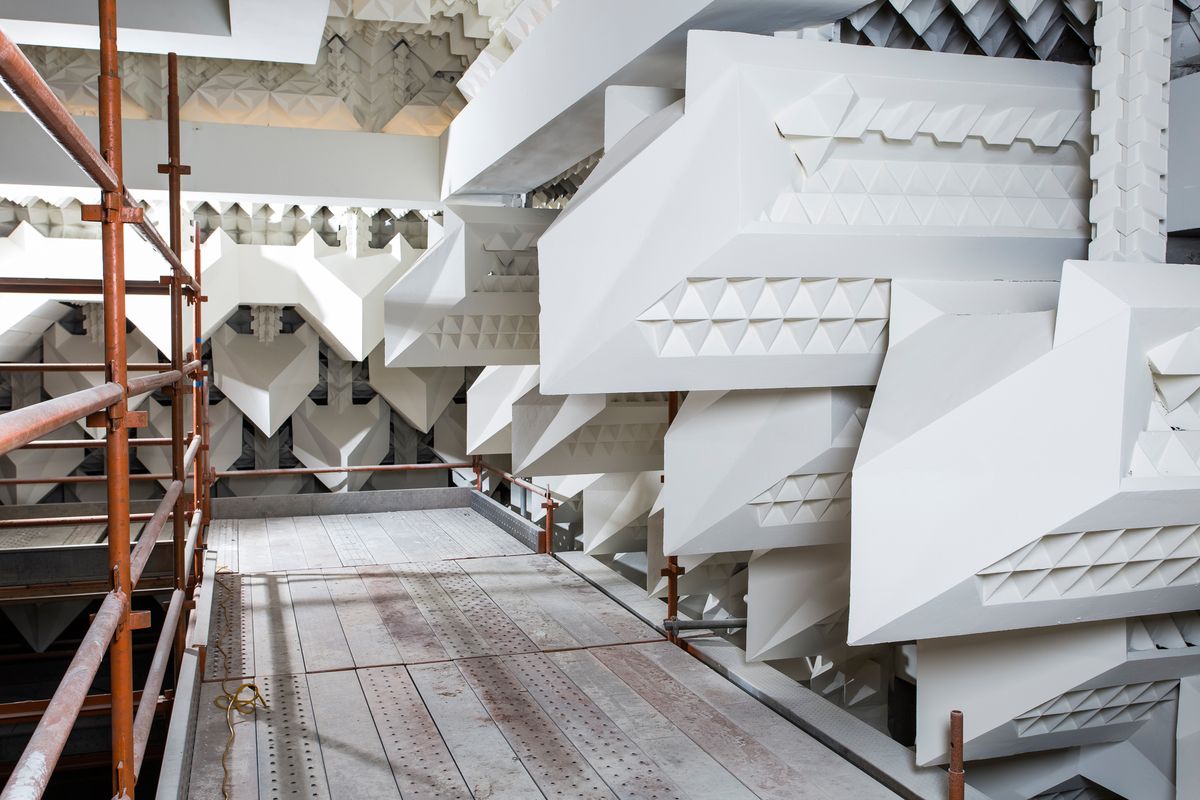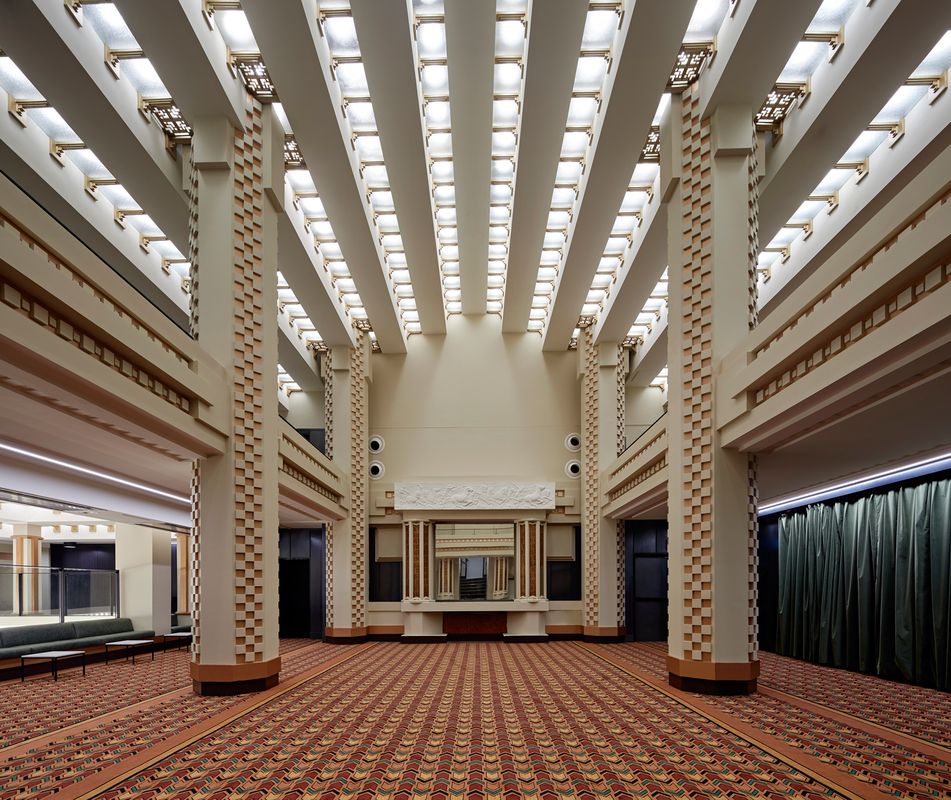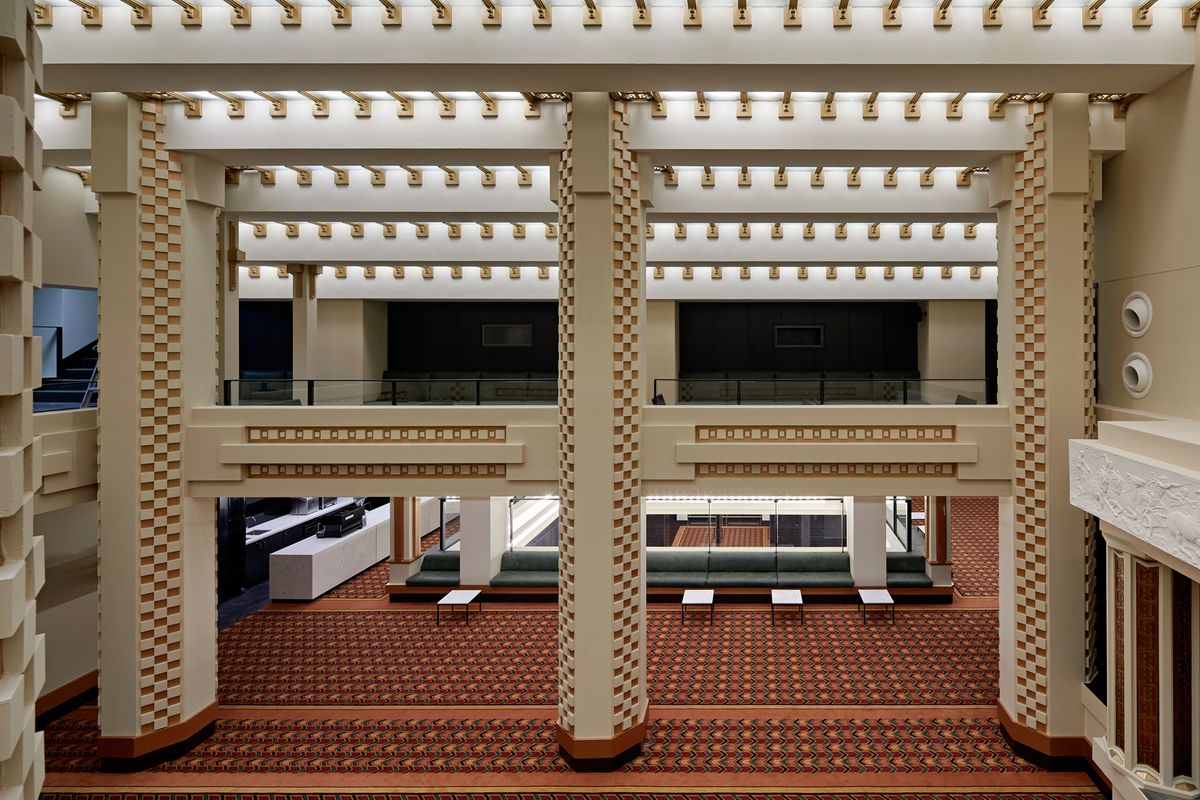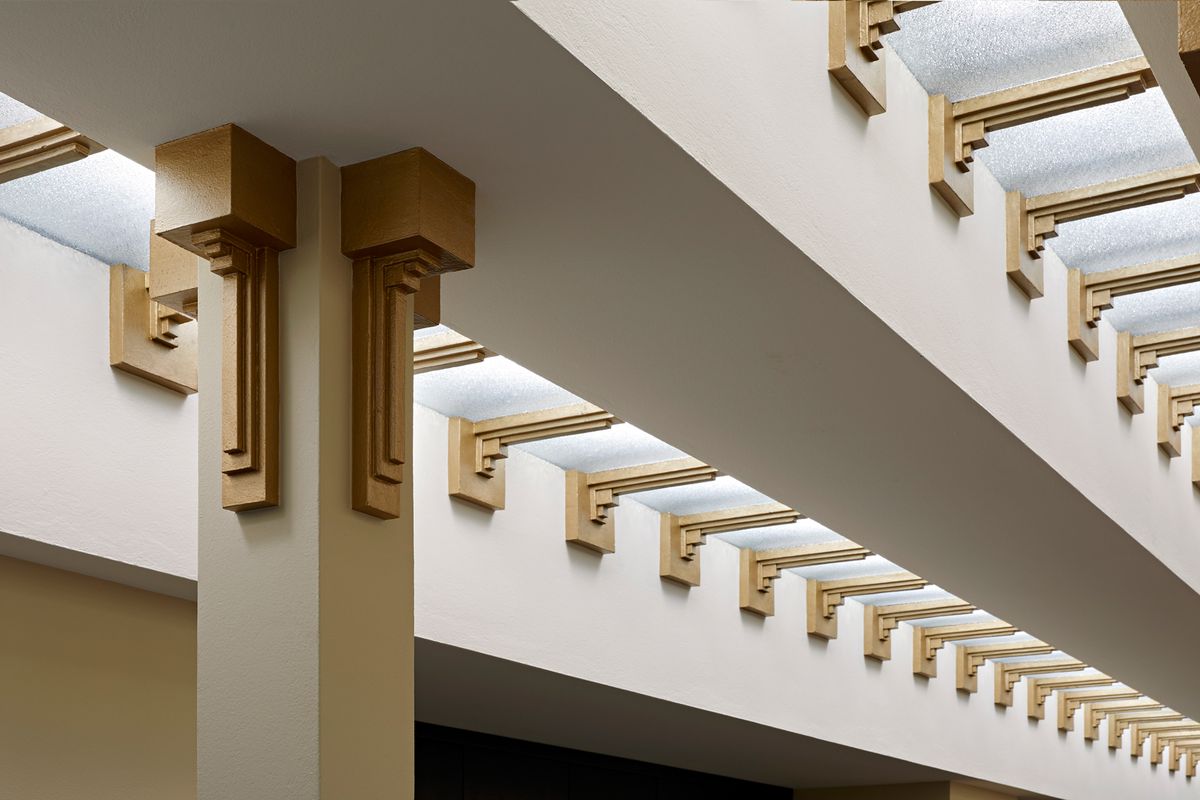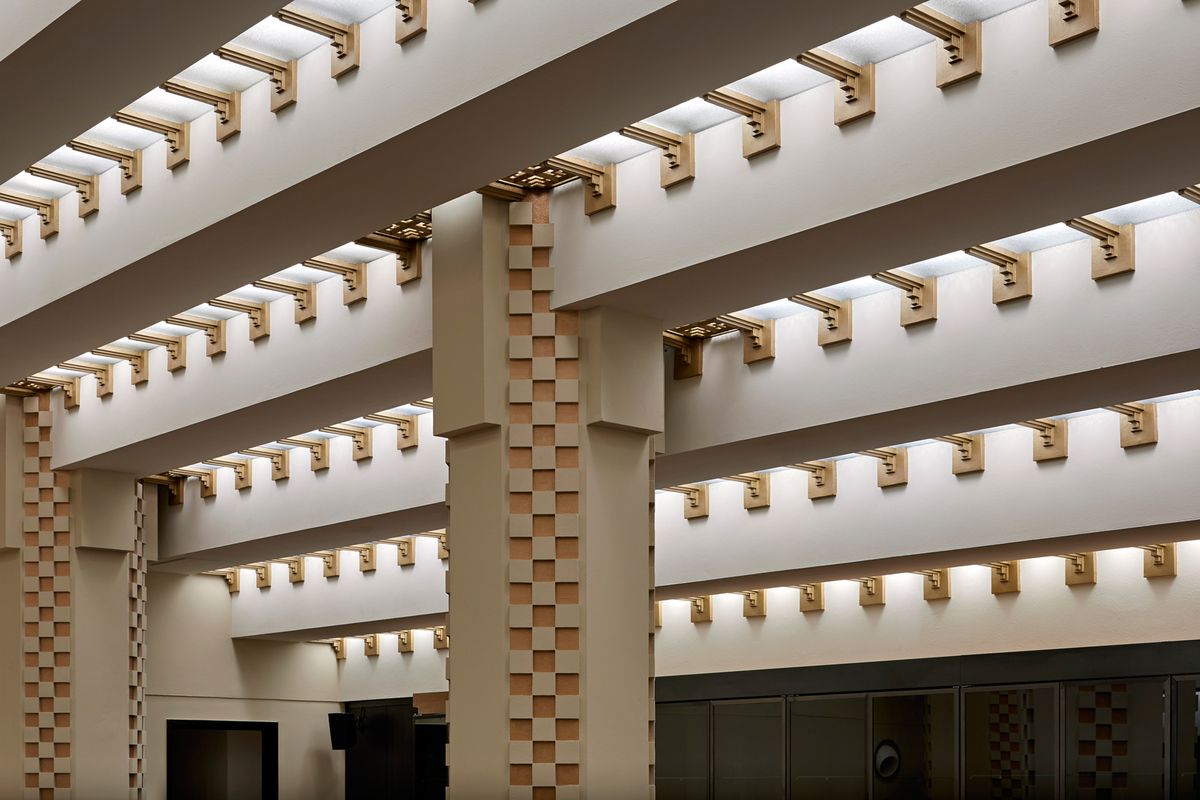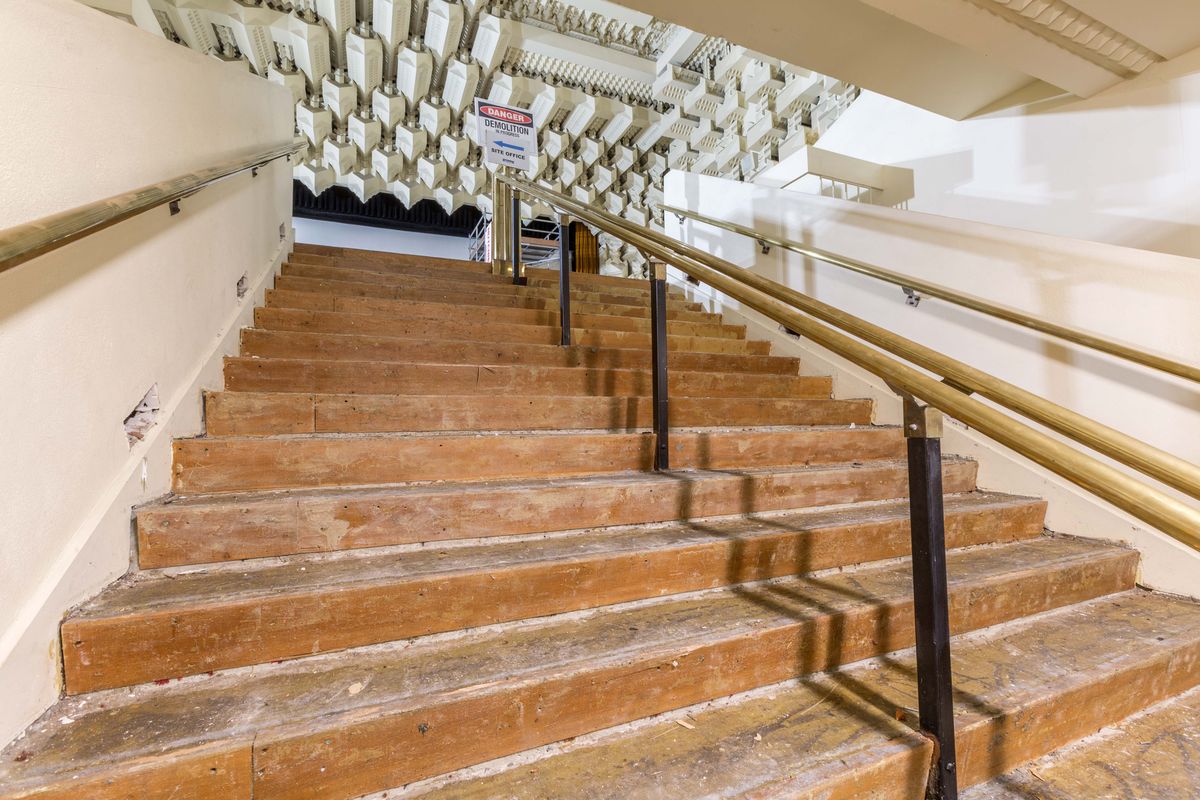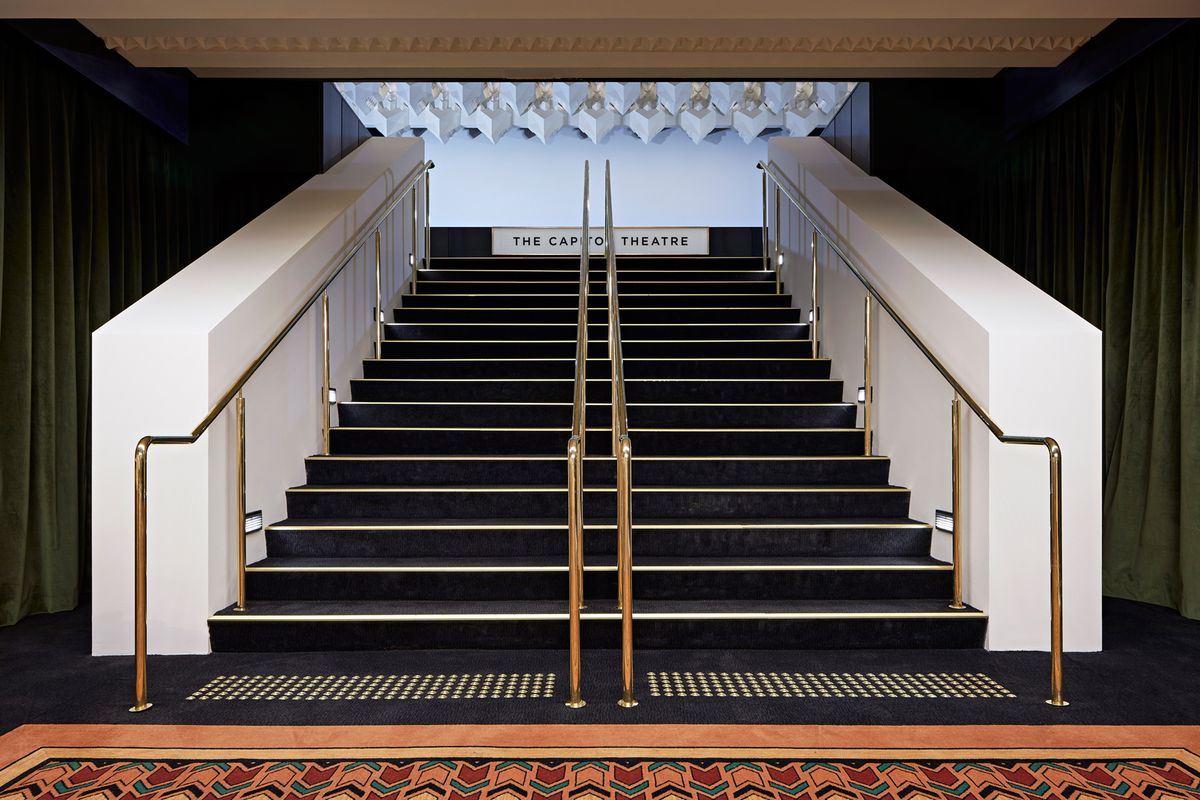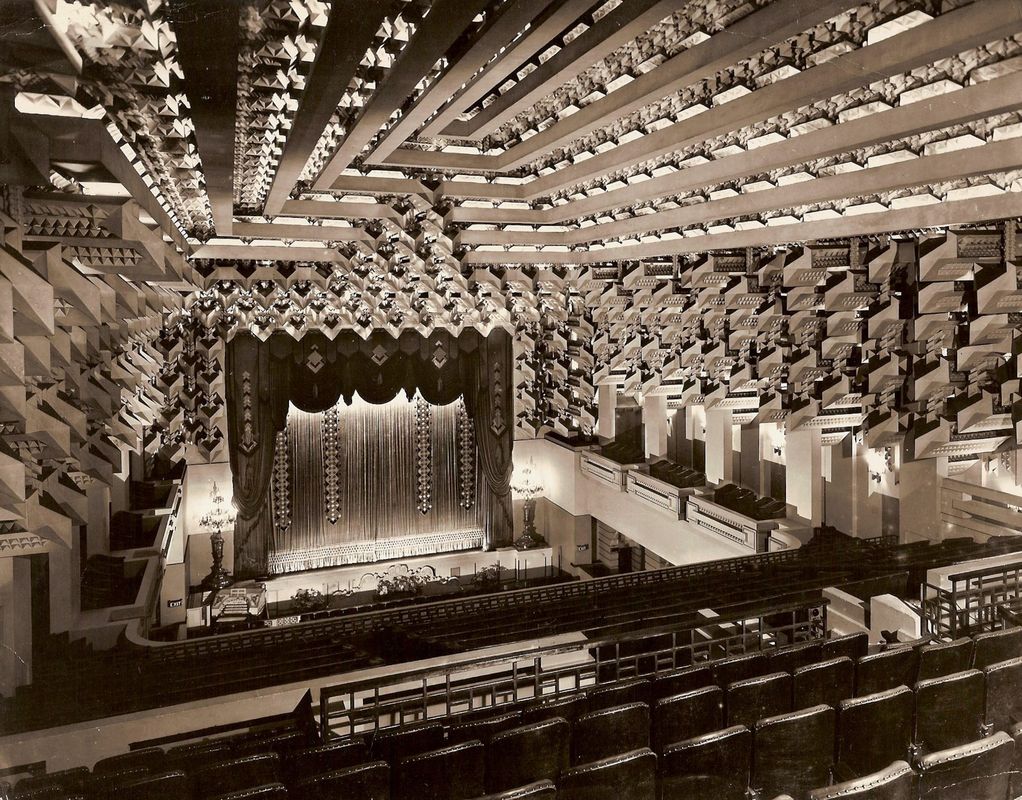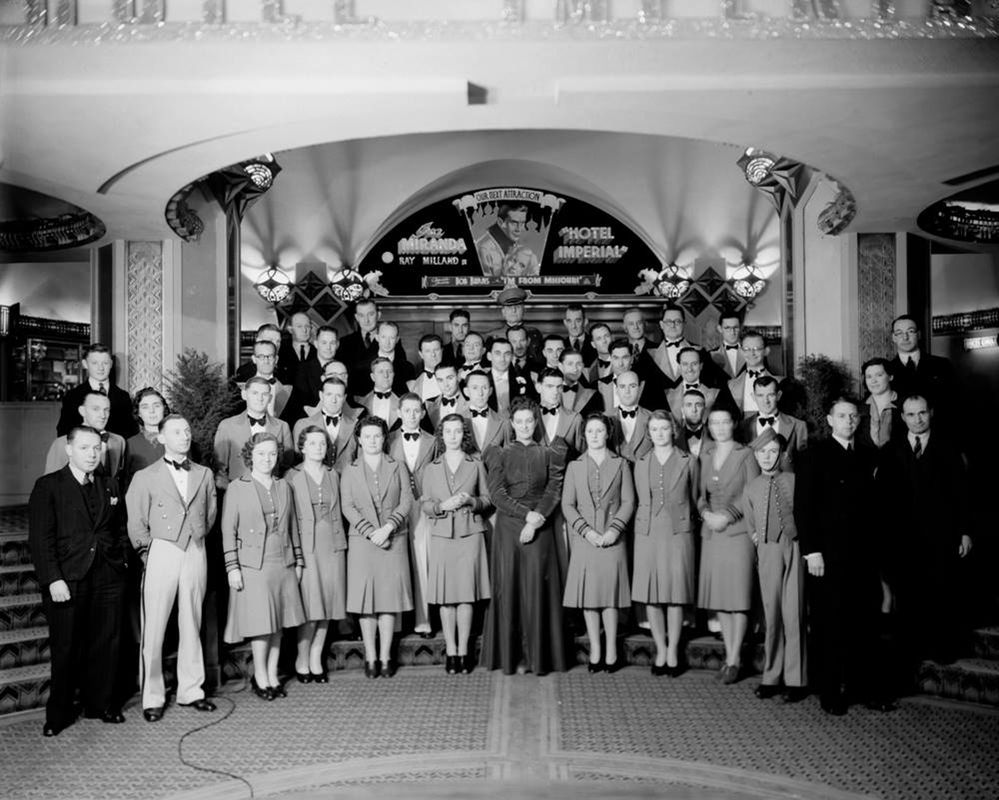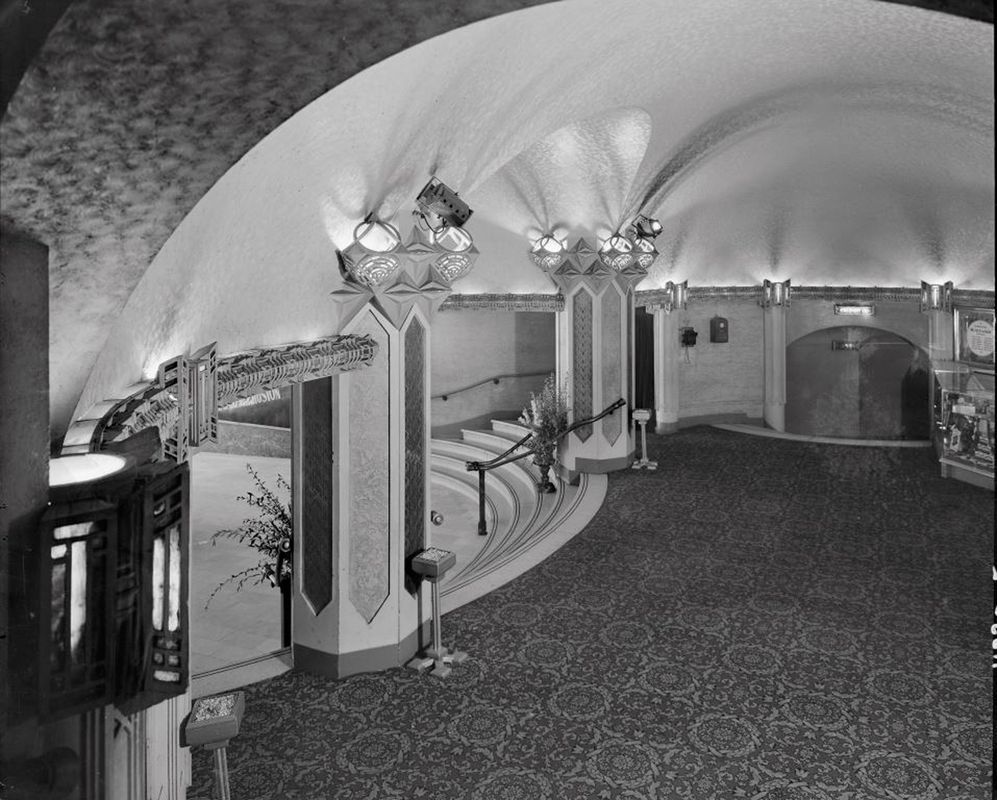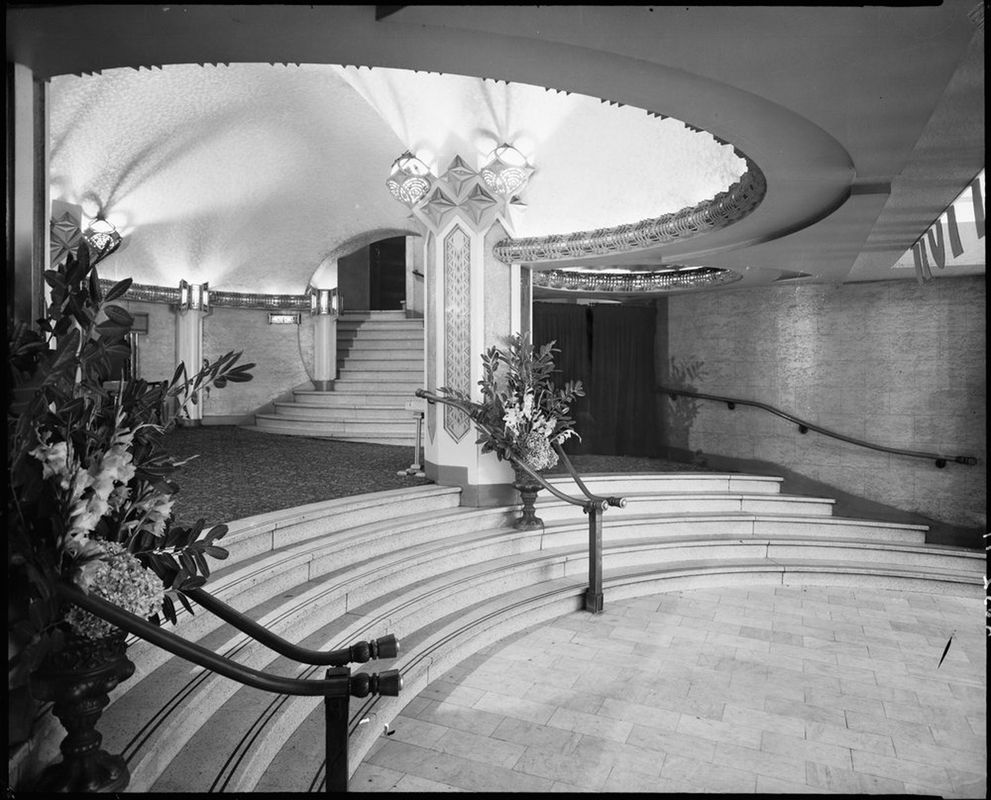Melbourne’s Capitol Theatre, originally designed by Walter Burley Griffin and Marion Mahony Griffin in 1924, has been reopened by RMIT University.
The historic cinema has been repurposed as an education facility for students studying film and digital media, and it will also be used as a public cultural venue.
Six Degrees Architects and Hutchison Builders completed the multi-million dollar refurbishment, which involved the retention of the iconic geometric ceiling of the cinema and the restoration of the entrance, as well as providing learning spaces for more than 1,000 students, new office and incubation spaces.
“It’s 21st century technology in a 20th century icon,” said Peter Malatt, director of Six Degrees Architects.
“All the ceilings and critical heritage elements are overhead, and all the new work comes up underneath,” he continued. “The new almost grows out of the ground.”
The Capitol, undergoing refurbishment.
Image: Tatjana Plitt
Martin Hook, dean of the school of architecture and urban design at RMIT University said, “One of the critical pieces is understanding the way we needed to treat the architecture as a working facility and understanding its heritage value. How do you transform that into a working learning and teaching space by day and is handed back to the city of Melbourne by night?”
“Six Degrees’ hand is critical in the project. They have such extensive experience in making heritage functional – returning a building to the city as a lively thriving community rather than a historic object. We’ve seen that delivered by Six Degrees and the team.”
The restoration included replicating the original carpet that was installed in the cinema.
“That’s really the most decorative part of the building in some ways,” Malatt said. “We had found two fragments of about two metres by one metre from which to sample the colours and the geometry and get it remade. That carpet was removed after only five or six years after the opening so almost nobody would remember it.”
In a way, it reintroduces the heritage of the cinema to an entirely new generation.
The salon of the Capitol.
Image: Tatjana Plitt
“The Capitol will be a home to research, ideas, innovation and new technology, where the future of Melbourne’s creative community will work alongside experienced industry practitioners to get ready for the jobs of today and tomorrow,” said Martin Bean, vice-chancellor and president of RMIT University.
“At the same time, The Capitol will open to the people of Melbourne once again, to be a place of education by day and culture by night, hosting film premieres, student showcases and community events – a venue for festivals, celebration, practical education and a place to connect.”
Capitol House, which contains the Capitol Theatre, was originally designed by Walter Burley Griffin and Marion Mahony Griffin in association with Peck and Kempter in 1924. The cinema is a Melbourne icon due to its ornate ceiling, designed to evoke a crystalline cave. It conceals more than 4,000 coloured lamps within its complex geometric structure.
The cinema fell out of popularity due to the rise of television in the 1960s. A proposal to demolish it in 1963 sparked one of Melbourne’s first conservation campaigns, drawing support from the National Trust, the Royal Victorian Institute of Architects and architect Robin Boyd, who described the building as “the best cinema that was ever built or is ever likely to be built” in The Australian on 24 December 1965.
RMIT University purchased the building in 1999 and closed it for restoration in 2014. The complex arrangement of the site also includes a block of apartments at the street front and the Capitol Arcade shopping centre, which was also restored by Six Degrees Architects.
“This revitalization project has transformed The Capitol at RMIT into a major cultural and educational hub, while delivering a valuable cultural asset back to the city of Melbourne,” said Victorian higher education minister Gayle Tierney.

